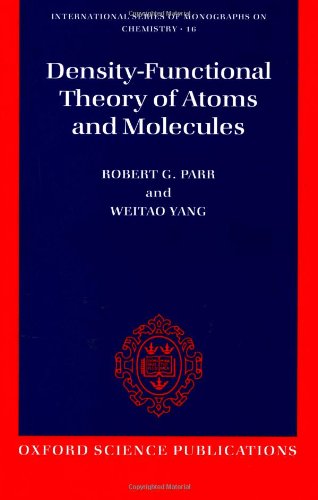Density functional theory of atoms and molecules pdf
Par leader roger le samedi, juillet 2 2016, 05:37 - Lien permanent
Density functional theory of atoms and molecules by Robert G. Parr, Yang Weitao


Density functional theory of atoms and molecules Robert G. Parr, Yang Weitao ebook
Publisher: Oxford University Press, USA
Page: 338
Format: djvu
ISBN: 0195042794, 9780195042795
Recent experiments with diatomic molecules [3,4] of the target molecules. On a theoretical level, these properties serve as powerful descriptors for molecular modelling and design. The research from the groups of Troganis and Melissas at the University of Ioannina is focused on simple dipeptides, and exploits molecular dynamic simulations, density functional theory based calculations and advanced nuclear magnetic resonance spectroscopy. Researchers have in the past computed this by means of density-functional theory. One of the fundamental atomic and molecular processes that takes place in strong laser fields. Density.functional.theory.of.atoms.and.molecules.pdf. Of the oxazole systems in accordance with the electron densities (Table 4). Quantitative structure-activity relationships (QSAR) are attempts to correlate . A call to scientists at IBM Zurich resulted in an opportunity to play with their atomic force microscope, a device that uses a tiny probe with a tip that actually "feels" the surface of whatever you're looking at. Density functional theory methods offer an alternative use of inexpensive computational methods which could handle relatively large molecules [9]. To me, the most readily accessible data is the plots showing the probability of finding water oxygen and hydrogen atoms at a specific distance to selected groups in the peptide structure. Density functional theory (DFT) is by now a well-established method for tackling the quantum mechanics of many-body systems. Density functional theory of atoms and molecules. The C–H hyperconjugation is the principal mode of electron release by the methyl group (pseudohetero atom) and stabilizes excited states more than ground state [16]. In this Rapid Communication, we extend the time-dependent density-functional theory (TD-.